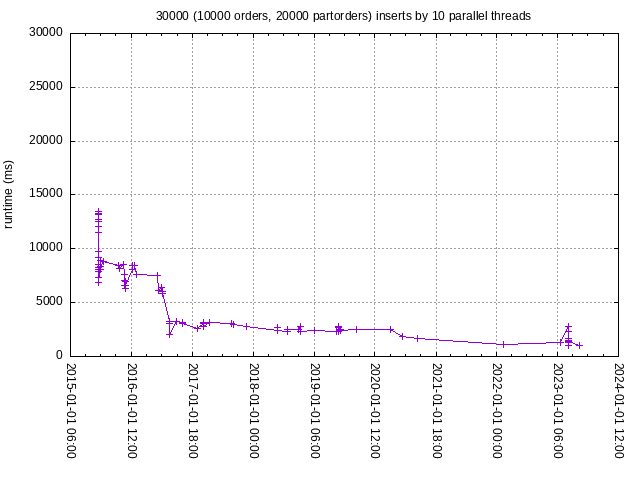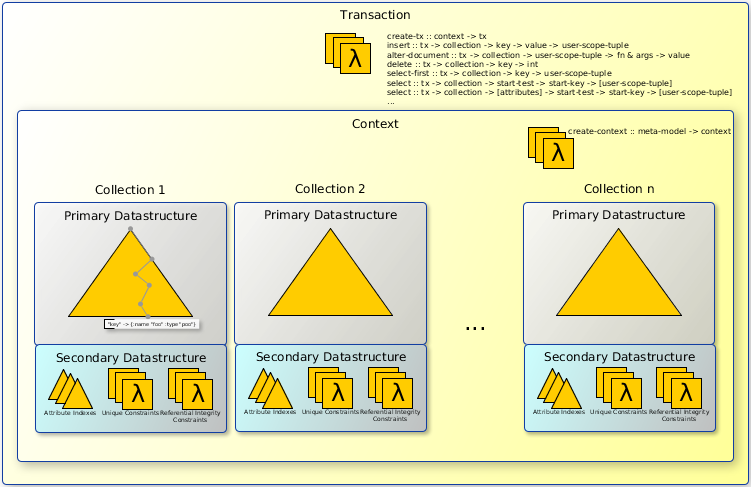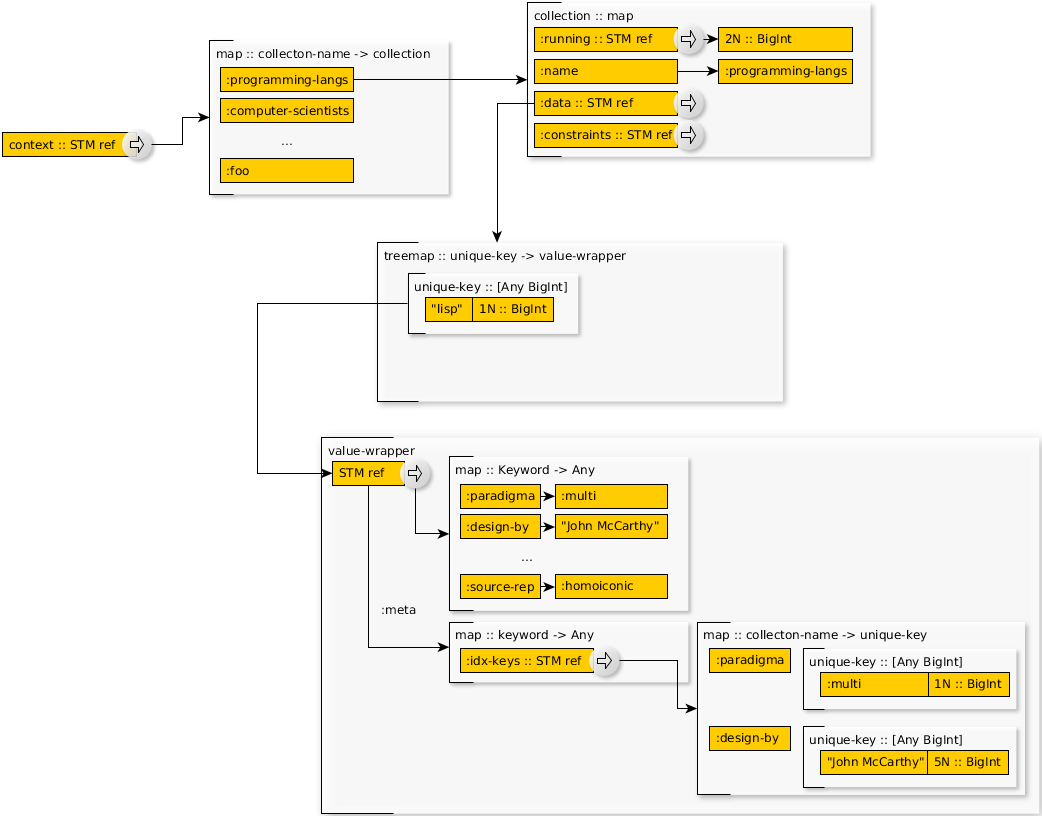lambdaroyal-memory
STM-based in-memory database storing persistent data structures
Dependencies
Leiningen
[org.clojars.gixxi/lambdaroyal-memory "1.0.3"]
Gradle
compile "org.clojars.gixxi:lambdaroyal-memory:1.0.3"
Maven
<dependency>
<groupId>org.clojars.gixxi</groupId>
<artifactId>lambdaroyal-memory</artifactId>
<version>1.0.3</version>
</dependency>
Classification
lambdaroyal-memory is an in-memory database, that primarily recides in the volatile main memory. Either occasionally or always write operations are flushed to a persistent backup storage.
Right now we support couchdb as backup storage. The combination can be considered stable and is used in production since more than a year.
Speed
Runtime for inserting 30000 complex documents with several secondary indexes and referential integrity constraints by 10 concurrent actors. This charts get updated using lein midje

Machine & Runtime Specs
Migrated from i5 to i7 in Sept. 2016
Memory: 16GB RAM @ 2133 Mhz
CPU: Intel(R) Core(TM) i7-6700HQ CPU @ 2.60GHz
Java(TM) SE Runtime Environment (build 1.8.0_91-b14)
org.clojure/clojure "1.8.0-RC4"
Conceptual Data Model
lambdaroyal-memory stores user data as key/value pairs, where the key is an orderable literal and the value is an arbitrary document. More precisily the document is at least immutable and optional persistent. Here persistence relates to persistent data structure that reflect all past modifications to the datastructure and are the cornerstone of clojure's ability to handle state and identity as two different things, which turns out to be fundamental for clojure's multiversion concurrency control-backed implementation of software transactional memory (STM).
key/value pairs are not unrelated. Each key/value pair belongs to a named collection. So the user can group key/value pairs by a certain cognitive model. But this cognitive model is not covered by lambdaroyal-memory. For the opposite consider a relational database management systems that relies a proper (meta) description of the tuples stored in individual relations, more technical the user describes the relations in terms of attributes, the value ranges, certain constraints like primary key constraints and foreign key constraints, index constraints and so on. Those manifest a necessary subset of the cognitive or ontological model. Here we stick to the key/value pairs grouped into named collections. that is almost all lambdaroyal-memory knows on the meta level - almost all. What's left are constraints on the keys and attributes of the value of key/value pairs.
This constraint are fundamentally speaking functional constraints, concrete instances are indexes to speed-up data retrival and to back other constraint like unique-constraints.
Data Model from an User Point of View

Data Model from an Technical Point of View

Meta Model
The meta model reflects the conceptual data model in technical terms that brings all information to the stake the database management system needs to perform necessary checks on the user operations like read, insert and update; to speed up the same and more fundamental to process a transaction (here ACI Transaction, A...atomar, C...consistent, I...isolated)
The metamodel states the subsequently given facts on the elements of the conceptual data model
- collection
where collection is a tuple of
- name of the collection
- unique constraint
- further functional constraints
- indexes per collection
- eviction channel that serves as persistent backup
Can you improve this documentation? These fine people already did:
Christian Meichsner, gixxi & gixEdit on GitHub
cljdoc is a website building & hosting documentation for Clojure/Script libraries
× close